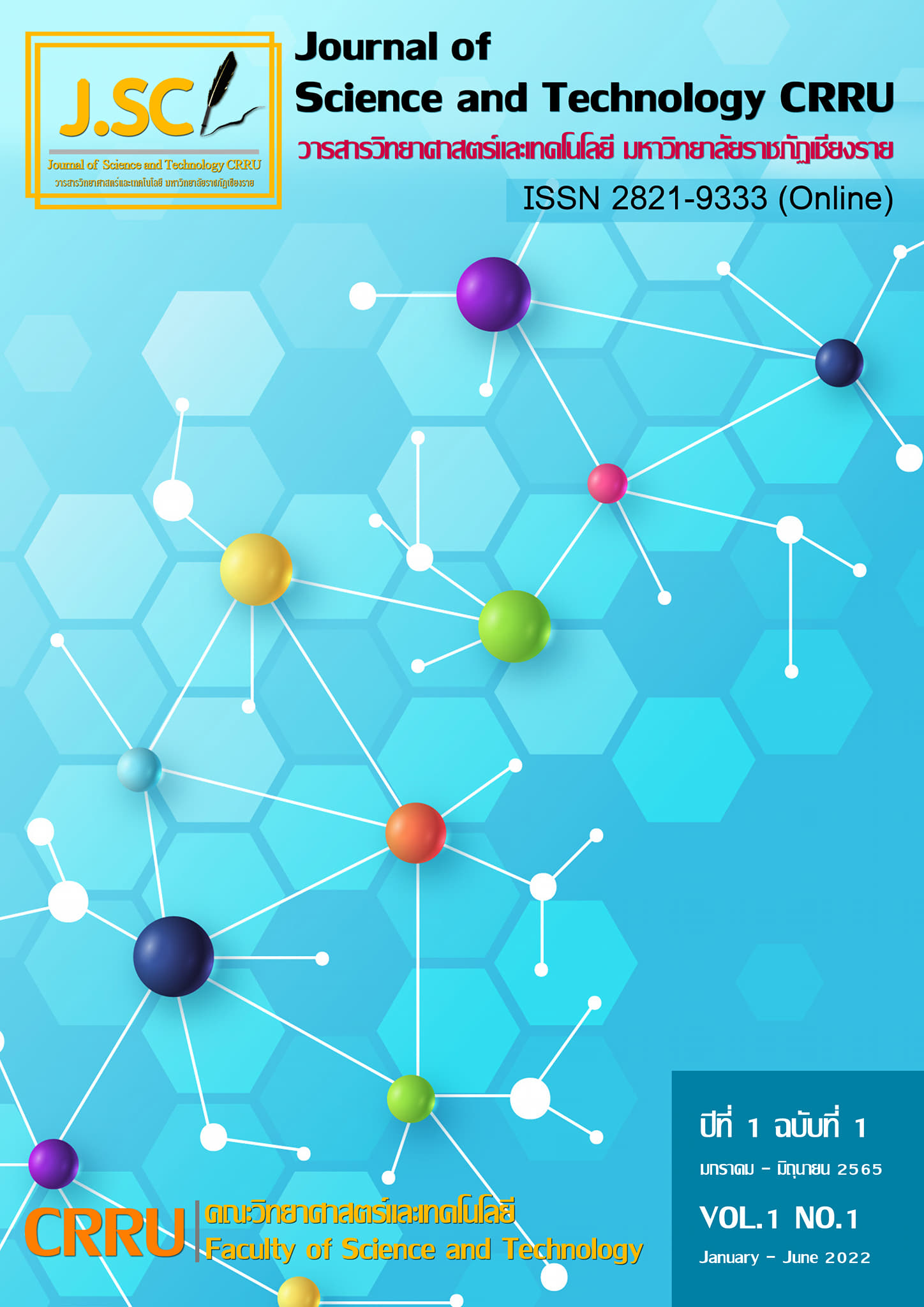The study of banana peels, Kluai Khai (Musa (AA group)) and Kluai Numwa (Musa ssp. ABB group), for oil adsorption
Main Article Content
Abstract
This research is a study of efficiency of Kluai Khai (Musa (AA group)) banana peels and Kluai Namwa (Musa (ABB group)) banana peels for oil adsorbtion. The two types of oil, soybean oil and diesel oil, were adsorption tested with temperature effect (20, 25, 30, 35, 40 and 45 (ºC)) and the oil thickness (4, 5, 6 and 7 (mm.)). The result indicated that at the temperature of 20 ºC with the thickness of oil surface at 5 mm., the adsorption was at its best. Kluai Khai banana peels are better than Kluai Namwa banana peels in absorbing oil. It showed that Kluai Khai banana peels can absorb vegetable oil at 15.65 grams and diesel oil at 3.17 grams while Kluai Namwa banana peels can absorb vegetable oil at 10.95 grams and diesel oil at 2.45 grams. From the result showed above, it indicated that banana peels is one of the natural materials with low cost that can be used as absorbing material for oil.
Article Details

This work is licensed under a Creative Commons Attribution-NonCommercial-NoDerivatives 4.0 International License.
Journal of TCI is licensed under a Creative Commons Attribution-NonCommercial-NoDerivatives 4.0 International (CC BY-NC-ND 4.0)
References
G. A. El-Din, A. A. Amer, G. Malsh, M. Hussein. (2017). Study on the Use of Banana Peels for Oil Spill Removal. Alexandria Engineering Journal, 57(3), 2061-2068. Retrieved from https://doi.org/10.1016/j.aej.2017.05.020
A. A. Al-Majed, A. R. Adebayo, M. E. Hossain. (2012). A Sustainable Approach to Controlling Oil Spills. Journal of Environmental Management, 113(1), 213-227. Retrieved from https://doi.org/10.1016/j.jenvman.2012.07.034
กฤษณ์ เฑียรฆประสิทธิ์ และศิริพร พงศ์สันติสุข. (2545). การกำจัดคราบน้ำมันในน้ำโดยใช้วัสดุธรรมชาติเป็นตัวดูดซับ. วารสารวิทยาศาสตร์และเทคโนโลยี(ภาษาไทย), 10(2), 26-31.
สำนักงานสิ่งแวลล้อมภาคที่ 13 (ชลบุรี). (2561, 15 มกราคม). น้ำเสียและการบำบัดน้ำเสีย. สืบค้นจาก http://reo13.mnre.go.th/th/news/detail/9363
สถาบันวิจัยสภาวะแวดล้อมจุฬาลงกรณ์มหาวิทยาลัย. (2563, 24 ธันวาคม). การจัดการและการแปรรูป น้ำมันใช้แล้วในภาคครัวเรือน. สืบค้นจาก http://www.ej.eric.chula.ac.th/content/6136/292
D. Sidiras, F. Batzias, I. Konstantinou. (2014). Simulation of Autohydrolysis Effect on Adsorptivity of Wheat Straw in the Case of Oil Spill Cleaning. Chemical Engineering Research and Design, 92(9), 1781-1791. Retrieved from https://doi.org/10.1016/j.cherd.2013.12.013
E. O. Obi, F. A. Kamgba, D. A. Obi. (2014). Techniques of Oil Spill Response in the Sea. IOSR Journal of Applied Physics, 6(1), 36-41. Retrieved from https://doi.org/10.9790/4861-06113641
A. Chavan, S. Mukherji. (2008). Treatment of Hydrocarbon-Rich Wastewater Using Oil Degrading Bacteria and Phototrophic Microorganisms in Rotating Biological Contactor: Effectof N:P Ratio. Journal of Hazardous Materials, 154(1-3), 63-72. Retrieved from https://doi.org/10.1016/j.jhazmat.2007.09.106
A. Bayat, S. F. Aghamiri, A. Moheb, G. R. Vakili-Nezhaad. (2005). Oil Spill Cleanup from Sea Water by Sorbent Materials. Chemical Engineering and Technology, 28(12), 1525-1528. Retrieved from https://doi.org/10.1002/ceat.200407083
R. Wahi, L. A. Chuah, T. S. Yaw Choong, Z. Ngaini, M. M. Nourouzi. (2013). Oil Removal from Aqueous State by Natural Fibrous Sorbent: An Overview. Separation and Purification Technology, 113(1), 51-63. Retrieved from http://doi.org/10.1016/j.seppur.2013.04.015
V. R. Olga, V. I. Darina, A. I. Alexandr, A. O. Alexandra, (2014). Cleanup of Water Surface from Oil Spills Using Natural Sorbent Materials. Procedia Chemistry, 10(1), 145-150. Retrieved from http://doi.org/10.1016/j.proche.2014.10.025
P. Khawas, K. K. Dash, A. J. Das, S. C. Deka, (2015). Drying Characteristics and Assessment of Physicochemical and Microstructural Properties of Dried Culinary Banana Slices. International Journal of Food Engineering, 94, 1-12.
Retrieved from https://doi.org/10.1515/ijfe-2015-0094
R. F. Johnson, T. G. Manjreker, J. E. Halligan, (1973). Removal of Oil from Water Surfaces by Sorption on Unstructured Fibers. Environ Sci Technol, 7(5), 439-443. Retrieved from https://doi.org/10.1021/es60077a003
H. M. Choi, R. M. Cioud, (1992). Natural Sorbents in Oil Spill Cleanup. Environ Sci Technol, 26(4), 772-776. Retrieved from https://doi.org/10.1021/es00028a016
J. Zou, X. Liu, W. Chai, X. Zhang, B. Li, Y. Wang, Y. Ma, (2015). Sorption of Oil from Simulated Seawater by Fatty Acid-Modified Pomelo Peel. Desalination and Water Treatment, 56(4), 939-946. Retrieved from https://doi.org/10.1080/19443994.2014.941302
A. O. Ifelebuegu, T. V. A. Nguyen, P. Ukotije-Ikwut, Z. Momoh, (2015). Liquid-Phase Sorption Characteristics of Human Hair as a Natural Oil Spill Sorbent. Journal of Environmental Chemical Engineering, 3(2), JECE 567 1-6. Retrieved from https://doi.org/10.1016/j.jece.2015.02.015


